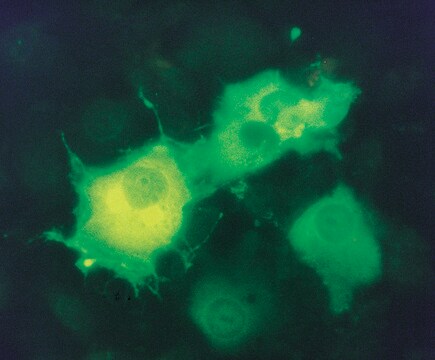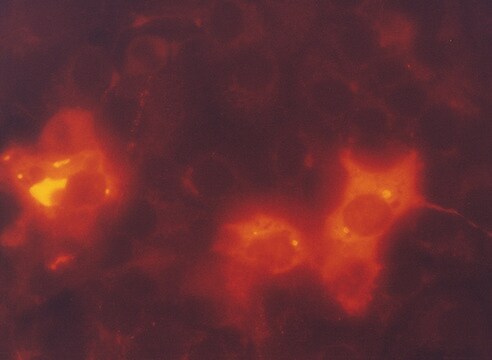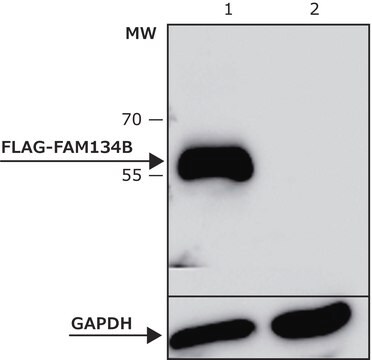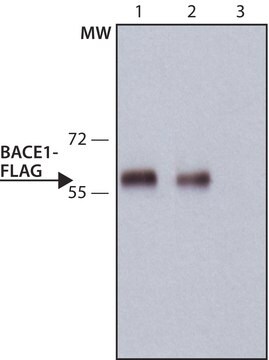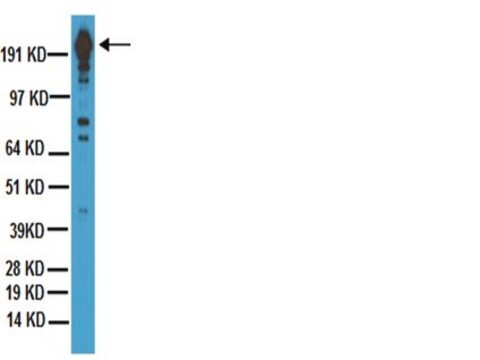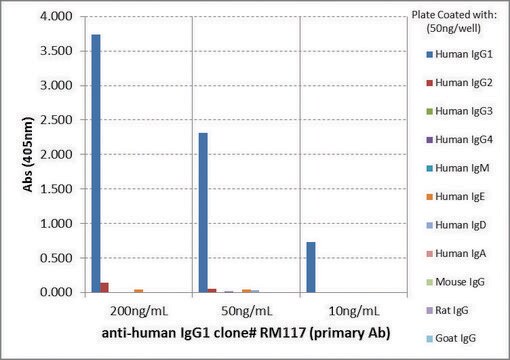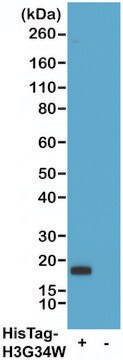おすすめの製品
詳細
モノクローナル抗FLAG BioM2マウス抗体は、ヒドラジド結合によってビオチンに共有結合的に結合しています。この抗体は、FLAG融合タンパク質のN末端、Met-N末端、またはC末端でFLAG配列を認識します。
アプリケーション
ビオチン標識抗体は、ストレプトアビジン-ペルオキシダーゼなどの、アビジンまたはストレプトアビジン結合レポーター酵素を使用する免疫検出法に使用されます。 組換えタンパク質の宿主としてマウス細胞を使用する場合には、1次抗体複合体が好まれます。
抗体は免疫蛍光検査、ウェスタンブロット法、顕微鏡用途、およびアビジン-ビオチン錯体の形成に適しています。
製品の詳細につきましては、FLAG®アプリケーションポータルをご覧ください。
抗体は免疫蛍光検査、ウェスタンブロット法、顕微鏡用途、およびアビジン-ビオチン錯体の形成に適しています。
製品の詳細につきましては、FLAG®アプリケーションポータルをご覧ください。
物理的形状
10mM リン酸ナトリウム溶液(pH 7.25, 50%グリセロ-ル, 150mM塩化ナトリウム, 0.02%アジ化ナトリウム含有)。
調製ノート
抗体をTBS(0.05Mトリス(pH 7.4)、0.15M NaCl)で希釈し、最終濃度を1~10 μg/mLにします。
法的情報
ANTI-FLAG is a registered trademark of Merck KGaA, Darmstadt, Germany
FLAG is a registered trademark of Merck KGaA, Darmstadt, Germany
適切な製品が見つかりませんか。
製品選択ツール.をお試しください
保管分類コード
10 - Combustible liquids
WGK
WGK 2
引火点(°F)
Not applicable
引火点(℃)
Not applicable
適用法令
試験研究用途を考慮した関連法令を主に挙げております。化学物質以外については、一部の情報のみ提供しています。 製品を安全かつ合法的に使用することは、使用者の義務です。最新情報により修正される場合があります。WEBの反映には時間を要することがあるため、適宜SDSをご参照ください。
Jan Code
F9291-.2MG-KC:
F9291-1MG:
F9291PROC:
F9291-5X1MG:
F9291-VAR:
F9291-VAR-N:
F9291-.2MG:
F9291-BULK:
試験成績書(COA)
製品のロット番号・バッチ番号を入力して、試験成績書(COA) を検索できます。ロット番号・バッチ番号は、製品ラベルに「Lot」または「Batch」に続いて記載されています。
この製品を見ている人はこちらもチェック
Hong-Won Lee et al.
Nature communications, 4, 1505-1505 (2013-02-21)
Co-immunoprecipitation (co-IP) has become a standard technique, but its protein-band output provides only static, qualitative information about protein-protein interactions. Here we demonstrate a real-time single-molecule co-IP technique that generates real-time videos of individual protein-protein interactions as they occur in unpurified
Yoori Kim et al.
Scientific reports, 7(1), 2071-2071 (2017-05-20)
Single-molecule studies of protein-nucleic acid interactions frequently require site-specific modification of long DNA substrates. The bacteriophage λ is a convenient source of high quality long (48.5 kb) DNA. However, introducing specific sequences, tertiary structures, and chemical modifications into λ-DNA remains technically
Helen Hwang et al.
Scientific reports, 4, 6391-6391 (2014-09-30)
The ends of eukaryotic chromosomes are capped by telomeres which consist of tandem G-rich DNA repeats stabilized by the shelterin protein complex. Telomeres shorten progressively in most normal cells due to the end replication problem. In more than 85% of
Qing Xu et al.
Nature communications, 8(1), 425-425 (2017-09-06)
Tumor necrosis factor (TNF) has a critical role in diverse cellular events including inflammation, apoptosis and necroptosis through different signaling complexes. However, little is known about how the transition from inflammatory signaling to the engagement of death pathways is modulated.
Kenichiro Kawai et al.
PloS one, 6(11), e27106-e27106 (2011-11-11)
Nanoparticles (NPs) are small entities that consist of a hydroxyapatite core, which can bind ions, proteins, and other organic molecules from the surrounding environment. These small conglomerations can influence environmental calcium levels and have the potential to modulate calcium homeostasis
資料
Glycan Labeling
ライフサイエンス、有機合成、材料科学、クロマトグラフィー、分析など、あらゆる分野の研究に経験のあるメンバーがおります。.
製品に関するお問い合わせはこちら(テクニカルサービス)

